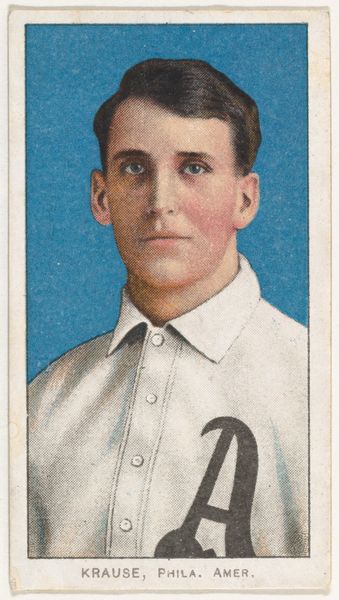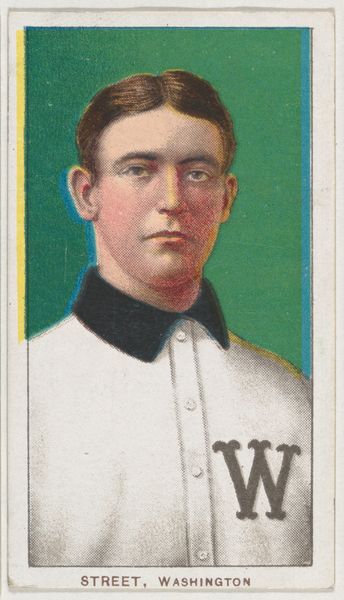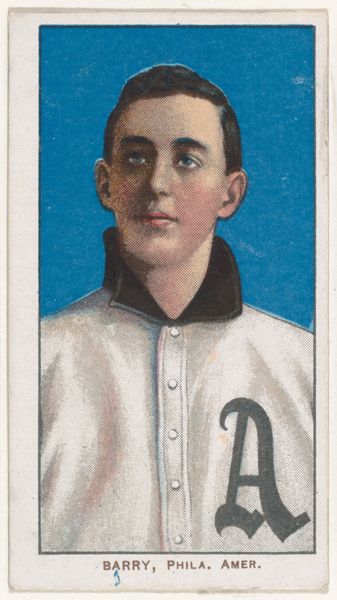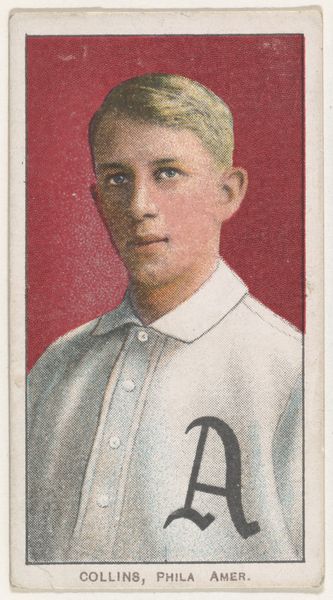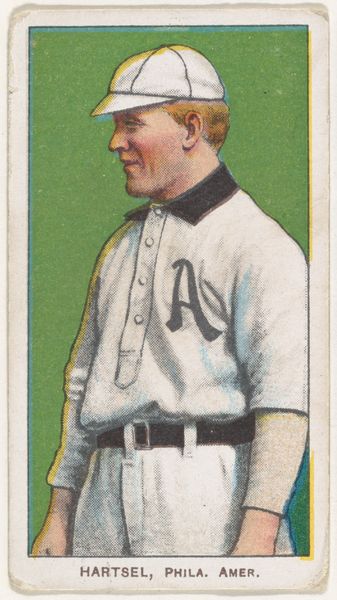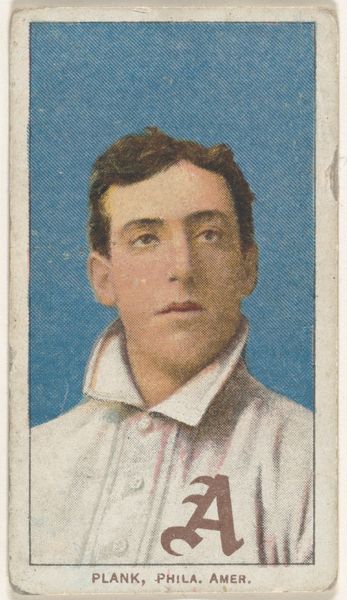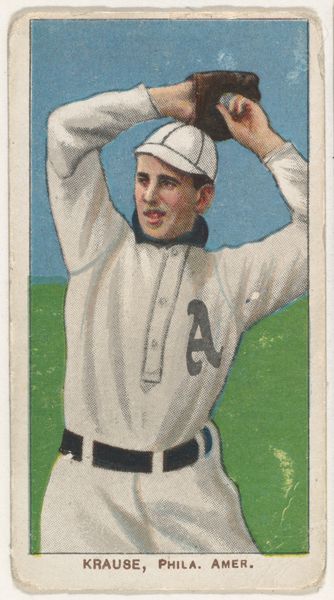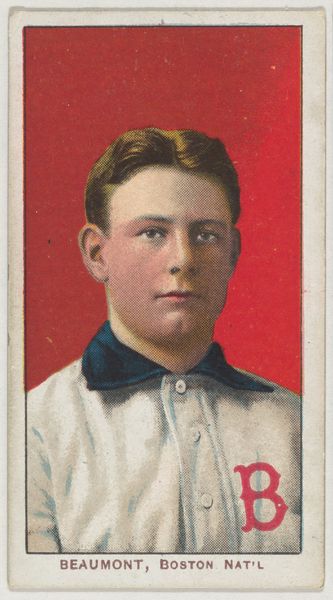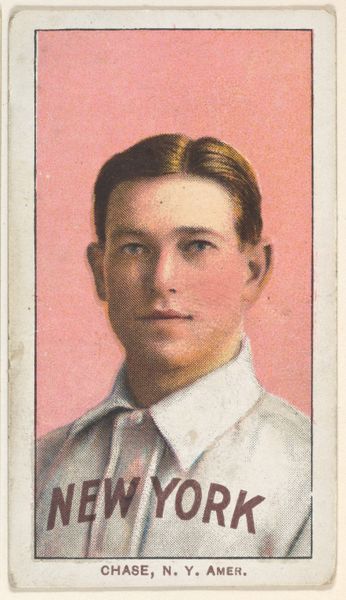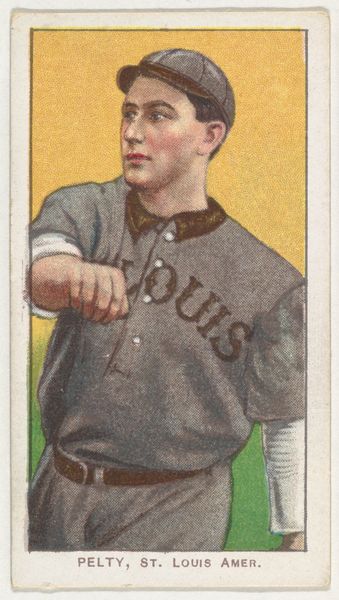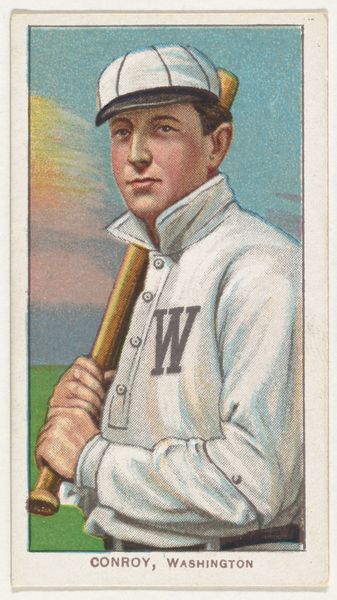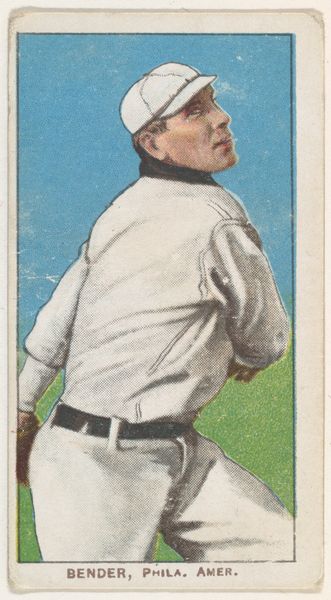
Dygert, Philadelphia, American League, from the White Border series (T206) for the American Tobacco Company 1909 - 1911
0:00
0:00
drawing, print
#
portrait
#
drawing
# print
Dimensions: Sheet: 2 5/8 x 1 7/16 in. (6.7 x 3.7 cm)
Copyright: Public Domain
Editor: This is a baseball card from the American Tobacco Company, dating from around 1909 to 1911. It's a portrait of a player named Dygert. The drawing is simple, yet there's something charming about it. I’m curious, what stands out to you most in terms of its formal qualities? Curator: Note the clear and rigid geometrical border; how it harshly defines and constrains the portrait. See also the portrait’s sharp lines; its relatively limited color palette. The design favors functionality over expression; an objective rather than subjective mode is highlighted via clear denotation and graphic design. The work privileges conveying information regarding its subject. How does the frontality of this composition contribute to its function, in your opinion? Editor: Well, presenting him straight-on feels very direct and uncomplicated, much like a driver’s license photo – to give a quick read of an identification in clear terms. So you’re focusing on how it delivers specific details efficiently rather than artistic nuance. Curator: Precisely. It’s a system of signs—the player’s image, the team’s initial, the player's name — all working together to convey specific information in a visually structured format. How is this different from a baseball poster designed for aesthetic pleasure? Editor: The baseball poster would be composed to be attractive and stir emotional reactions… unlike this small tobacco advertisement where, as you put it, function takes the lead over any poetic quality. Thanks for the interesting observation. Curator: Indeed. This type of design served very clear communicative purposes, a microcosm of a particular mode of thinking about form and content that was dominant in this period of American visual production.
Comments
No comments
Be the first to comment and join the conversation on the ultimate creative platform.
